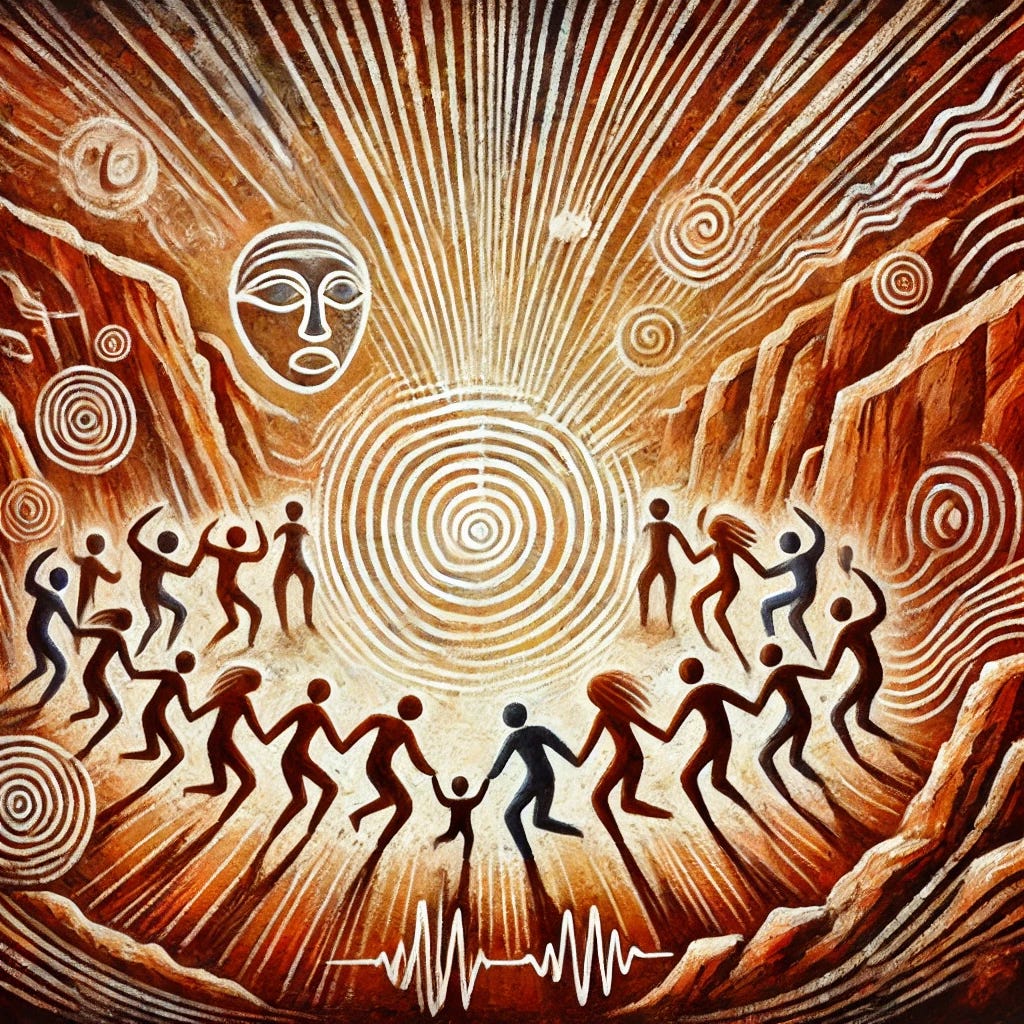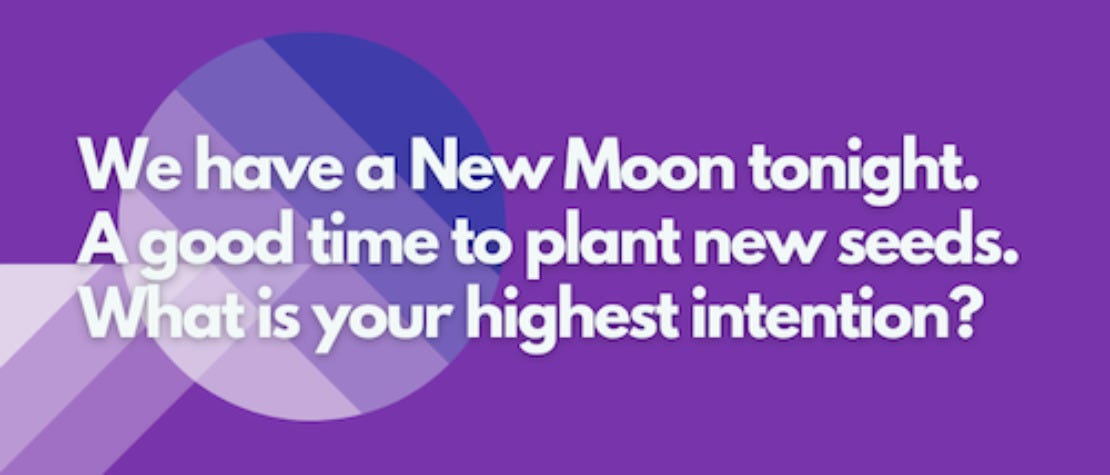In Rhythmic Movement Together
Restoring the Equilibrium
tl;dr: Rhythmic movement is one of humanity’s oldest and most essential tools for healing and connection. The metacrisis and the rise of AI make returning to our bodies and moving together not just ancestral wisdom but a cultural imperative.
Before we start, I want to take a moment to honor the great Joanna Macy's transition into the realm of the ancestors. For as long as I have been in this work, she was the elder to learn from and look up to. An exemplary life of service and wisdom. We are blessed to have her light.
I also want to remind you that now is the time to sign up for BOOST Your Practice!
Back to our regularly scheduled programming:
There is a grounding invocation that I turn to at the beginning of each coaching session. The aim is for the two of us to find our place here. Between earth and sky, between ancestors and descendants, awake to the intention that is held in the relational space between myself and the person that I am coaching.
You can listen to the invocation here.
There is a part of the invocation that says:
Tuning our heart’s ear, listening for the drumbeat and the dance steps of our ancestors.
Allowing our cells to remember that we have been sung and prayed and storied into being.
That we have been delighted and despaired into existence.
It is that drum beat that I want to reflect on today.
If you've worked with me or if you've been reading Future Ancestors for a while, you know that I am keen on our remembering that the human wisdom that we need lives within our very cells. That the old songs and the old stories want to come to life within us. And that all we have to do is turn our attention towards what our bodies already know.
My assertion is that there is a living wisdom that tells us who and how to be when things get really hard. And that the way to meet this current moment is with a posture of forward-facing remembering.
So I was deeply moved when Jamie Wheal recently reposted a segment from his book Recapture the Rapture: Rethinking God, Sex, and Death in a World That’s Lost Its Mind. He posted on July 13, the 40th anniversary of Queen's live rendition of “We Will Rock You” at the Live Aid global fundraiser at the Wembley Stadium in London.
According to Wheal, Freddie Mercury “uncorked what many fans and critics agree was the most epic live rock and roll performance in history.”
Let me pause here and say, look, I'm Puerto Rican, I grew up on salsa and hip-hop, and I am blessed to be living through the era of peak reggaeton, with Bad Bunny at its apogee. For me, We Will Rock You is not even close to the top of what I think of when I think of music to move to.
But still! It is unheard of in human history to have a moment when 40% of Earth’s population tuned into the same live performance at the exact same time.
And this specific song came with a stomp. A relatively simple combination of body movement and sound, that two billion of us were doing together.
In Recapture the Rapture, Jamie Wheal argues that music serves as a powerful neurobiological tool. The book shows how conscious engagement with music, breath, movement, sexuality, and substances are key to restoring meaning and connection in modern life.
Music is an essential part of a suite of tools that induce peak states, and the experience of unity, transcendence, focus, creativity and healing. Our ancient rituals understand this as well as our contemporary neuroscience .
Music combined with movement is a practical lever for personal and collective transformation.
And of course we know this.
It is something that both ancient traditions and modern neuroscience affirm. In This Is Your Brain on Music, Daniel Levitin writes that:
“Americans spend more money on music than on sex or prescription drugs combined.”
But beyond what Americans spend, there’s a deeper truth to remember.
I often choose to remind us that our enslaved ancestors were forced to do brutal work for 16 hours a day. But they nevertheless still found it important to set aside time to drum and dance. To move their exhausted bodies together. Because there would be no way to survive that kind of trauma without processing it - together and through the body.
Levitin teaches that:
Throughout most of the world and for most of human history, music making was as natural an activity as breathing and walking, and everyone participated… Concert halls, dedicated to the performance of music, arose only in the last several centuries. (from This is Your Brain on Music)
Wheal says:
That feeling of connection to others through the power of rhythm and song is, according to ethnomusicologists, even older than language itself.
We've been doing this for a long time! The argument implies that we evolved into our self-reflective human selves through rhythm and song. Even before we could talk!
I make the assumption that those of you who take the time and read are people concerned with alleviating suffering - personal, interpersonal, and cultural suffering. So then I stand at attention when Robin Dunbar says that among the San Bushmen of southern Africa, one of our earth’s oldest continuous cultures:
Trance dances are particularly likely to take place when relationships within the extended community have started to unravel as people bicker among themselves. A trance dance restores the equilibrium, almost as though it wipes the slate clean of the toxic memories of the injustices and slights that poisoned relationships. (from Human Evolution)
It seems to me that it behooves us to learn from these cultural elders. The metacrisis is “meta” because it includes everything. It is an ecological, political, economic, spiritual and cultural crisis. The cultural aspect is a crisis of both meaning and connection. There is no way we can fully and wisely turn to any aspect of this crisis without tending to the cultural aspect.
And there is no way to tend to the cultural heart of the metacrisis without music and the rhythmic movement of our bodies. Believe me when I tell you I understand how hard it can be… that it can be almost impossible to get policy wonks, philosophers, thought leaders, and many segments of the activist movement to truly embrace the idea that the thing to do is dance. That we need to move rhythmically together before we even try to tackle the problem.
But it is also baffling that it is this hard. Because it is one of the “least expensive” and most generative things we can do together. Take a moment to imagine what it would be like to address the hairiest challenges in our individual lives, in our relationships, and in our politics if we took the time to come into resonance and coherence together before we even tried.
If you are one of those people that have a practice of going to dance classes or to trance and ecstatic dance sessions, this is good. If you go to clubs, parties, festivals where there is dancing, this is great. Keep going! If you are like those Caribbean mothers that start their morning singing and dancing while making breakfast, we know that you already learned how to survive.
If you are a person who doesn't think of yourself as someone who dances, or if dancing is not as central to your culture as it is to mine, please know that this is especially for you.
But what we're talking about here is beyond our individual dancing. It is also about the bigger hurdle of bringing rhythmic movement to our communities, and to the spaces in which we are trying to do meaningful things together. This might be a bit harder. Depending on the cultural context. But it is imperative.
Our Bodies vs AI
There is yet another prescient reason why we want to return to practices of being rhythmically in our bodies together. And here I want to give credit to Sophie Dowes who got me thinking about it during one of our touchpoints in Peter Lindberg’s Collective Journaling sessions. And that is of course, AI.
We don't know exactly what AI is nor do we know where it is going. We do know that it is a massive aggregator/replicator that can draw on vast amounts of data to probabilistically feed a combination of humanity’s ideas back to us in highly intelligible language.
Or, to put it simply, AI is a mirror.
It has the potential to change almost everything. It is a massive disruptor. And it seems to be getting more capable by the day.
But here is what it doesn’t have. AI does not have a body. AI is the latest in a set of technological advances, going back to the printing press, that draws more and more of us into a world of abstraction. And abstraction, like technology itself, can be extremely helpful for us humans. But it cannot replace the body.
Abstraction cannot replace the body, but it is in the nature of abstraction to try. It wants to draw us up and away into a vastness that cannot be touched.
It actually becomes destructive when it takes us too far outside of our bodies.
Our text based culture pulled us up into the left side of our brain. Our screen based culture is pulling us way out of our bodies and into a web of abstraction. We are losing touch with what is real.
But if we want to hold our rightful place in relation to AI, which is actually our creation, then the move is to stay embodied. Because our bodies can’t be replicated.
To return to our bodies. And to turn to one another.
And the best way to do it is to breathe, and get in rhythmic movement together.





At this juncture I’m pretty terrified of AI, but taking the Luddites approach seems futile. So I guess I’ll have to keep dancing.